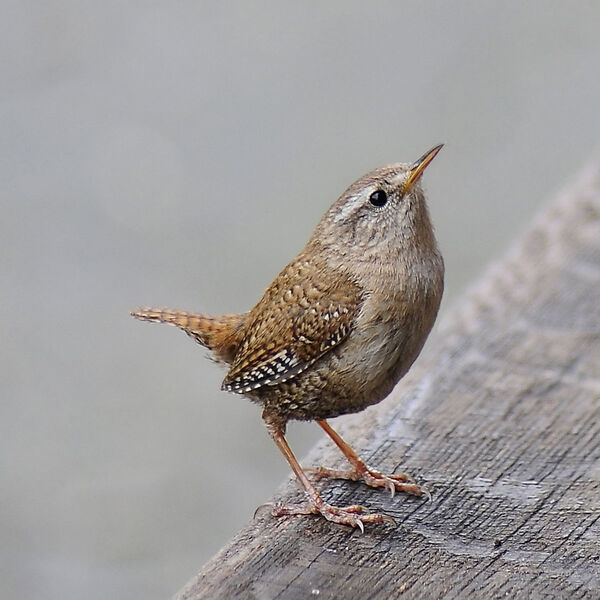I would genuinely buy a bra that needed charging if it did something useful (like phase cooling / some sort of refrigeration). Not from Temu though
ello! (they/them)
- 0 Posts
- 17 Comments
Where I live, in December, it’s already night by 4pm, whereas in July, 4pm isn’t even the peak of heat yet. But if someone said “good evening” to me at 4pm in either of them, I’d prob accept it either way, and I’m a meteorologist
Also: In the UK and the US, the typical meteorological standard is just to split seasons by month (DJF MAM JJA SON) for easy stats reasons, but other countries have entirely different standards based on climate. Different people have different definitions and it’s completely fine

 2·25 days ago
2·25 days agoit’s about a drug sniffer dog who bites off the balls of a mafia boss, runs away from witness protection, and gets adopted by a mailman.
It’s definitely a stupid antics movie: at one point, a woman gets farted on by a zebra whilst holding a lit match
that makes a lot of sense! I’m very grateful to be part of an academic community that seems to value open access, as well of part of a university that pays for access and submission to most of the journals I need to use

 6·25 days ago
6·25 days agowe had See Spot Run (23% on rotten tomatoes) but it got taped over by another movie “accidentally” when I was 7 and I haven’t seen it since…
having read the plot on Wikipedia, it features a lot more references to testicles than I remember
I’ve only ever published in open access journals (partially because I’ve only got 3 papers out, but also out of preference) is it just prestige that makes people go with pay-to-view journals? or are there other factors?
Nausicaa is my favourite film :)! the soundtrack is so bizarre in the best way
(the last film I watched was Kiki’s delivery service, also recommend that to everyone! it’s a lot more relaxing and kid-friendly than Nausicaa though)
Using “,” as ellipses here is a pretty interesting tone indication feature!
On Tumblr, “…” ended up having connotations of judgement or anger, so to avoid that, people evolved to use “,” as a softer version (often implying a more silly/amused tone) instead !
video of secretary bird with a fake snake

 9·1 month ago
9·1 month agoIt’s only really fine if someone calls me an appearance-based compliment if they’re my partner or a woman that I’m close to.
not to be confused with Potoooooooos !
all you need to know is that dogs are fluffye! no need to look at the other comments :)!

 1·5 months ago
1·5 months agogood question!! I actually might have been mistaken by saying sea salt was an INP (whoops).
Sea salt is a great condensation nuclei (CCN). CCN allow cloud droplets to form instead of ice crystals.
For cloud seeding to work well, it’s better to seed with INP instead of CCN because if you encourage lots of droplets to form, all you get is a bunch of really tiny droplets, making a really bright white cloud (no rain!). (Side note: that’s why rain clouds look dark: they’re made of fewer really big droplets.)
Adding sea salt to clouds is a thing though! It’s been proposed as Marine Cloud Brightening - adding lots of sea salt to the air over the ocean, making the earth more reflective to combat further global warming.
As far as I know, most inorganic salts are good INP or CCN, but have varying efficiencies. Sea salt dissolves in liquid water whereas silver iodide doesn’t, and silver iodide has the right sort of hexagonal crystal lattice for ice to start sticking to. So silver iodide is a great INP whereas sea salt is a great CCN.
Even longer (and reasonably silly) explanation here: https://www.acsh.org/news/2022/09/01/why-are-clouds-seeded-silver-does-it-work-16538

 5·5 months ago
5·5 months agoThis article isn’t perfectly scientifically accurate but it’s better than most! For those interested, here’s a better (detailed) explanation of the science:
Cloud seeding works best in supercooled liquid clouds, which start with barely any ice in. For ice to form in clouds, you need INP (ice nucleating particles), aerosols such as sea salt, or dust, for the ice to grow onto. INP can be pretty rare, depending on where you are in the world.
By adding silver iodide (an efficient INP) ice crystals can form. This means the cloud has both ice and liquid water in (a “mixed phase” cloud).
For multiple reasons, ice grows better and faster than liquid cloud droplets (the “Wegener Bergeron Findeisen effect” for one). Because there’s only so much water in the cloud, these ice crystals then grow at the expense of water droplets in the air, allowing for big snowflakes to grow, but droplets evaporate.
This turns it from a cloud with many tiny droplets, into one with big heavy snowflakes, which fall out of the cloud. Before the snowflakes reach the ground, they melt, turning into rain.
TLDR; cloud seeding takes the water already in the cloud, and makes it precipitate slightly more efficiently, but only if you improve the balance of aerosols in the air just right

 1·7 months ago
1·7 months agoit’s a feminist movement, in backlash to misogyny and pro-natalism in South Korea (it’s becoming more widespread, though). The 4Bs are the “four no’s”:
- no dating men
- no sex with men
- no marriage with men
- no childbearing
It gets a lot of pushback and is called selfish etc. but women are very angry & upset that the government only sees them for their reproductive use, and it’s reasonable to not want to date someone who doesn’t view you as human.

 0·7 months ago
0·7 months agoSurprised to see none of the comments mentioning the 4B movement


the wet bulb temperature1 is just the temperature of a wet thermometer, and varies with humidity and temperature. Wet bulb temp is never higher than the dry bulb temp, so (entertainingly) you’re proposing that the meaning of 100° varies wildly and is always lower than the true temperature, effectively making the air temperature always ≥100°, and increases when the air is drier, like some sort of inverse relative humidity.
1(I’m aware you probably didn’t mean wet bulb temperature here, but let’s have fun with the idea) :)